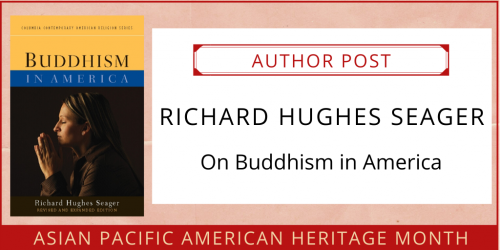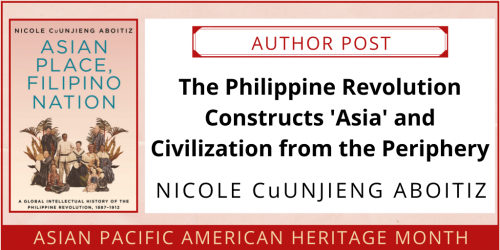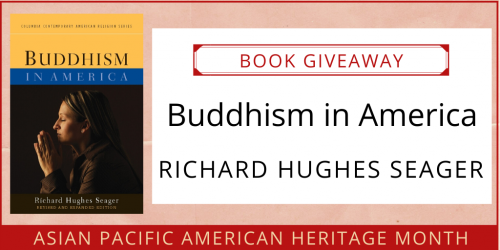Q&A: Anne Mendelson on Food and the Chinese American Journey

“Chow Chop Suey is an eye-opener, a book that will give everyone a deep appreciation of the exquisite skill required to produce authentic Chinese food and the sweep of history that brought Chinese cooking to America.”
~Marion Nestle, professor of nutrition, food studies, and public health at New York University and author of Soda Politics
This week, in observation of Asian Pacific American Heritage Month, we are featuring a backlist favorite. In Chow Chop Suey: Food and the Chinese American Journey, Anne Mendelson traces the story of Chinese food as a part of Chinese-Western interactions from the late seventeenth-century Qing dynasty to twenty-first-century America. In the words of scholar Rachel Laudan, “Mendelson brings together political and culinary history . . . gripping, authoritative, and timely.”
Read the Q&A below to learn more, and enter our drawing for a chance to win a free copy of this book!
• • • • • •
Q: What does the book’s title mean?
Anne Mendelson: It underscores one of my main arguments: the communications gap in the U.S. between English speakers and speakers of various Cantonese sublanguages from about 1850 on was all but hopeless. One food-related example of the resulting mixups started appearing on bilingual restaurant menus in American Chinatowns after about 1900. The Chinese character for stir-frying—a word pronounced something like “chow” in Cantonese—often occurs in sections of stir-fried dishes: chicken, pork, and others. Unfortunately, stir-frying itself was, at the time, a culinary concept absolutely foreign to English-speaking patrons. Unable to grasp what “chow” might mean, they somehow latched onto a Cantonese phrase pronounced roughly “chop suey.” It actually means “odds and ends,” or “miscellaneous bits,” and was commonly used for minor offal like chicken gizzards and giblets, which were often cooked by the “chow” technique. Hence the characters meaning “stir-fried odd bits,” pronounced “chow chop suey,” might show up on the Chinese side of the menu. What English-speakers didn’t know was that the “chow” section also contained (among other things) stir-fried beef, vegetables, shrimp, lobster, and squab. They decided that the operative phrase for these beef, etc. dishes must be “chop suey.” Restaurateurs in turn decided that the simplest solution was to anglicize the stir-fry section of the menu as the “chop suey” section. American restaurant-goers thus fell in love with stir-fried dishes, “chow” dishes, while calling them “chop suey” dishes. This is just one example of mutual incomprehensibility between people who wrote in ideograms and people who wrote in alphabetical phonemes, people who spoke languages or dialects with “sung” tones and people who spoke a “toneless” language.
Q: How does this compare with American responses to other immigrant cuisines?
AM: I argue that for at least a century Chinese food in America wasn’t an “immigrant cuisine” at all.
Q: Why not?
AM: Because the Chinese themselves weren’t an immigrant group in the same sense as people who left Ireland or Norway or Italy to settle in a new home as future citizens. Almost as soon as they reached Gold Rush California, they were the butt of a “Chinese Go Home” hostility that no other group had encountered. Some of this was rooted in a unique racial dynamic—all other new Gold Rush arrivals were Caucasians, while the Chinese were easily singled out by their physical appearance. Other reasons sprang from that uniquely forbidding language barrier and from peculiarities of culture in the parts of South Guangdong (Canton) province from which the Gold Rush Chinese had come. For instance, respectable white immigrant communities had marriage customs recognizable to other Americans. But in South Guangdong it was not customary for women to accompany spouses who went abroad. Daughters and wives were expected to remain secluded in ancestral Guangdong villages. At intervals, husbands would sail back across the Pacific on conjugal visits, beget children, and again set out for America. And so the community of Chinese that formed in West Coast and Rocky Mountain states after 1850 was almost exclusively male, with only tiny handfuls of women—another sign of apartness from white society.
Q: So who cooked for them?
AM: They cooked for themselves! To think that they needed women to get decent meals on the table is pure cultural bias. Since eighteenth-century English adventurers began trading in Guangzhou (Canton City), Westerners had marveled at Chinamen’s cooking skills. On reaching “Gold Mountain,” their name for California, Chinese quickly set up restaurants admired by a big cross-section of San Francisco newcomers. Everybody agreed that they were extraordinarily gifted at mastering skills useful to non-Chinese neighbors, and this was one. Almost in no time, Chinese restaurant cooks were serving meals brilliantly tailored to American preferences. Meanwhile, the community also received a steady stream of culinary necessities imported from Hong Kong: soy sauce, preserved fermented vegetables, dried shrimp, seeds for growing fresh produce. From laborers to shopkeepers to merchants, these men had absolutely no trouble preparing Chinese meals to their own standards in the Far West.
Q: When did they start spreading out from the Far West?
AM: That happened after racist hostilities ramped up to a new level in the 1870s and 1880s, leading Congress in 1882 to pass the first, but not last, Chinese Exclusion Act, prohibiting unskilled Chinese laborers from entering the country and triggering actual massacres. Since they were barred from acquiring U.S. citizenship, they had few legal protections. People began making their way eastward in hopes of avoiding racist violence. They also began devising ways of getting around the Exclusion Act by setting up small businesses that removed them from the prohibited “labor” category and qualified them as “merchants” with automatic protection against deportation. It was this search for protected status that eventually inspired thousands of refugees from the Far West to found restaurants in Midwestern and East Coast cities where they were coming together in new Chinatowns.
Q: So relief from persecution was a goal that helped jump-start America’s Chinese restaurants?
AM: Yes—but with an extra twist. As Chinese seeking safer harbors began thinking about Chinatown restaurants, they also began thinking about white Americans as a target clientele. Their genius for gauging the taste preferences of the dominant culture was uncanny. Between about 1900 and 1910 they began fashioning a new, unprecedented version of their own cuisine that pushed all the right buttons for delighted white patrons. These included heavy doses of sugar, ditto of soy sauce. Red-tinted sweet-and-sour presentations, often applied to sizable batter-coated and deep-fried chunks of boneless meat or poultry. Thick starch-bound sauces. In short, all the elements of what many Americans still take to be “Chinese cooking.” Was this a distorted caricature of the beautiful, sophisticated South Guangdong cuisine? That’s certainly one way to interpret it. But there’s another—which I sum up in the following: “It was a chunk of true Americana created, at a time of shameful injustice, by American residents either completely or partly denied the privileges of citizenship. And for more than a century, it has given great pleasure to millions who did enjoy those privileges.”








